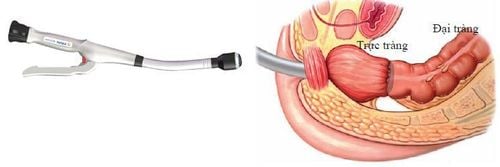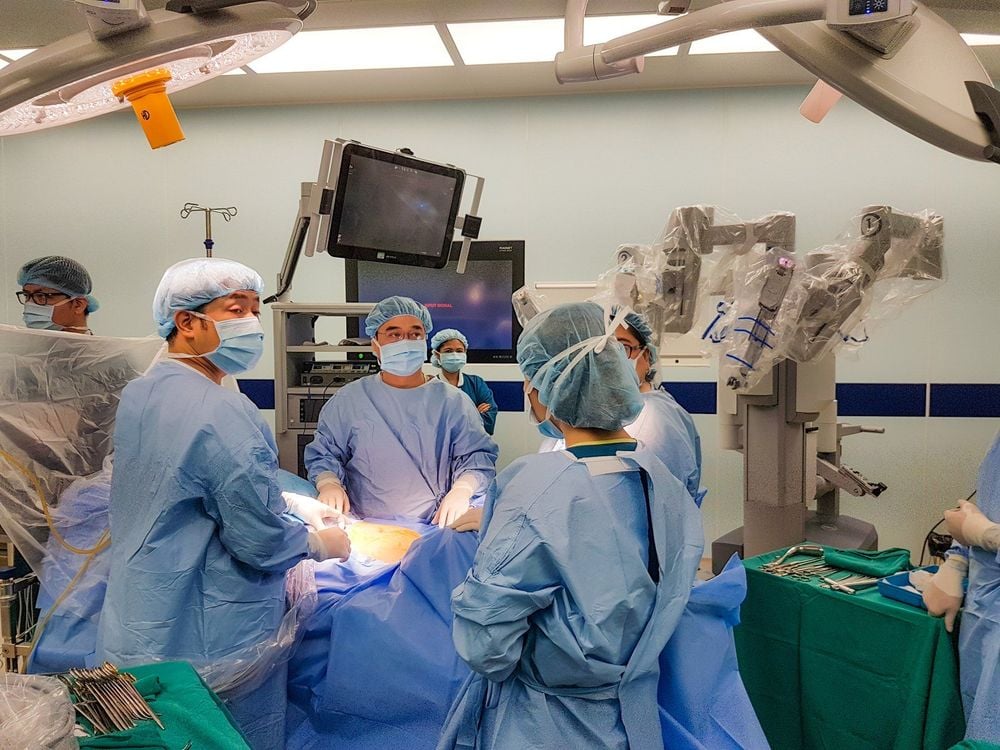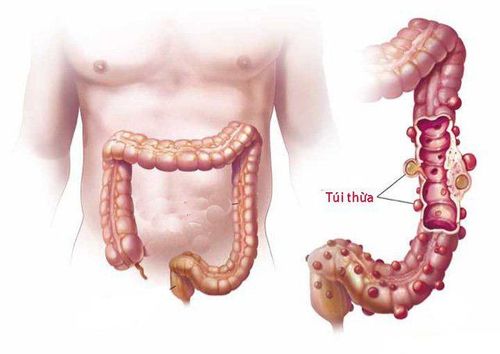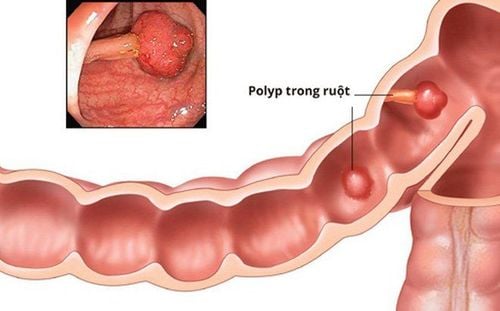This is an automatically translated article.
The article is professionally consulted by Master, Doctor Nguyen Ngoc Thang - Gastroenterologist - General Surgery Department - Vinmec Danang International General Hospital. The doctor has 17 years of experience in the field of gastrointestinal and hepatobiliary surgery, and has over 9 years of experience in endoscopic intervention.Laparoscopic right colectomy is the least invasive interventional technique that allows the doctor to cut the right colon through small incisions of 1.5 cm. The scope is attached to a camera that transmits a magnified image on a screen, instruments are inserted and through other holes to perform the surgery.
1. What is right colectomy?
The colon is part of the large intestine, located at the end of the digestive tract that connects with the small intestine. Based on the anatomical structure, the colon, although continuous, is also divided into 3 parts according to the direction and arrangement:On the right side: the cecum, the ascending colon leads to the transverse colon. left side: The descending colon empties into the sigmoid colon (pelvis); Rectal: The part of the sigmoid colon that connects to the end of the digestive tract. Right colectomy is the removal of the ascending colon and one third of the transverse colon to treat benign as well as malignant diseases of the colon. Compared with traditional open surgery, surgery by laparoscopic colectomy has more outstanding advantages and is increasingly being applied in medicine.
Right colectomy is the surgical removal of 10-15 cm of ileum, cecum, ascending colon, right transverse colon, and corresponding mesentery and re-establishing gastrointestinal circulation. If 2/3 of the transverse colon is removed, it is called an enlarged right colectomy. This surgery is performed to treat both benign and malignant diseases involving the colon,
1.1 Indications Colon cancer, relatively early stage tumors (T1, T2, T3). Inflammatory bowel disease with bleeding. Right colonic diverticulum. Colon polyps. Tuberculosis of the ileum Complicated colonic diverticulum Necrotizing intussusception Mesenteric tumor. Diagnosis of intestinal obstruction due to tuberculosis: Cancer and pre-cancer With tumor: Laparoscopic right colectomy is most often applied to cases of tumor in the colon from the ileocecal valve to the transverse colon.

Phẫu thuật cắt đại tràng phải nội soi giúp chức năng đại tràng phục hồi nhanh hơn
2. Pros and cons of laparoscopic right colonectomy
2.1 Advantages No traditional view restriction, optimal image quality with higher accuracy. Less pain after surgery Colon function recovers quickly Small surgical scars. Minimize the risk of wound infection. Guaranteed aesthetics. Fast postoperative recovery, short hospital stay. Quick return to normal activities 2.2 Disadvantages Some cases of inflammation with a lot of adhesion to surrounding organs (due to late stage tumor, adhesion inflammation due to previous surgery) laparoscopic surgery is limited, with a high rate of having to be transferred. to open surgery.3. Complications of laparoscopic colectomy
Complications of laparoscopic colectomy can include:Bleeding Blood clots in the legs (deep vein thrombosis) and lungs (pulmonary embolism) Infection Damage to organs near the colon such as the bladder and small intestine Podium, open anastomosis (hand sewing or cutting with a press machine).
4. What should be noted after laparoscopic colonectomy?
Patients need to eat soft, almost liquid foods that can be digested quickly and easily in the days leading up to surgery. Sometimes the patient can only drink water (eg juice, broth). All patients were only allowed to drink water for 24 hours before surgery and completely fast from midnight before the day of surgery. After surgery, patients need to be fed intravenously until they can eat and drink normally. Most patients can eat a light meal 4-5 days after surgery. Usually, patients can return to normal activities within 1-3 weeks after surgery, but it takes longer to fully recover. Therefore, patients should avoid exertion, heavy lifting for 4-6 weeks.
Sử dụng kỹ thuật nội soi với dải tần ánh sáng hẹp (NBI) tại Bệnh viện Đa khoa Quốc tế Vinmec
Laparoscopic surgery for colon tumors is applied in most surgical centers in developed countries and Vinmec Health System with the most modern machinery and equipment along with a team of experienced doctors and nurses. .
In particular, Vinmec International General Hospital has been equipped with the most modern gastrointestinal endoscopy equipment of Olympus with the method of endoscopy with narrow light frequency band (NBI). This is a breakthrough method in screening and diagnosing cancers of the gastrointestinal tract (esophagus, stomach, duodenum and colon and rectum) at early and very early stages. NBI endoscopic images have high resolution and contrast, making it easy for doctors to detect small changes in color, morphology of cancerous and precancerous lesions that are difficult to detect with conventional endoscopy. .
Please dial HOTLINE for more information or register for an appointment HERE. Download MyVinmec app to make appointments faster and to manage your bookings easily.













